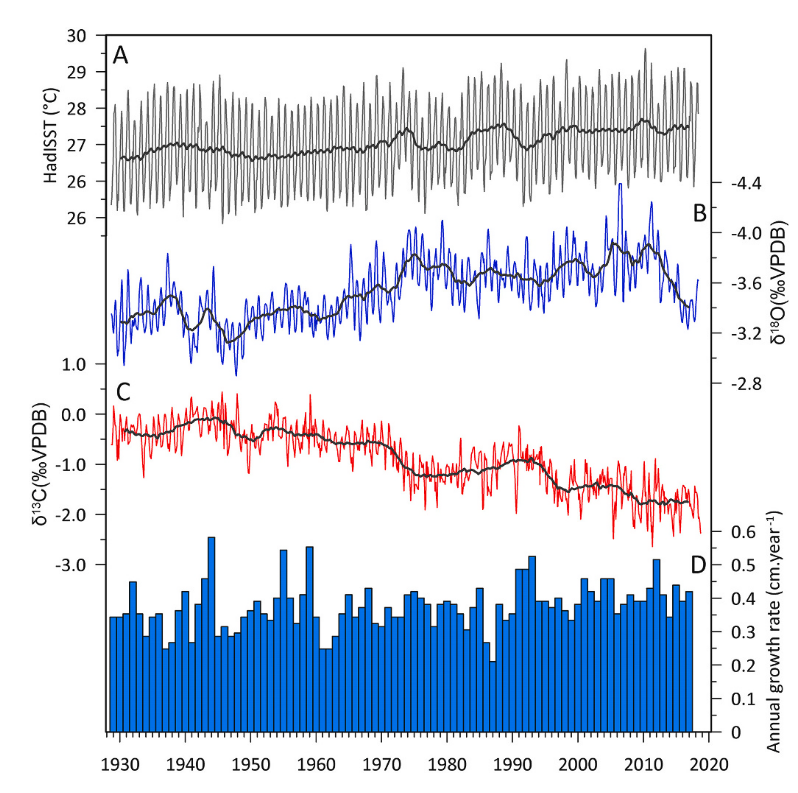N.S. Pereira, L.J. Clarke, C.M. Chiessi, K.H. Kilbourne, S. Crivellari, F.W. Cruz, J.L.P.S. Campos, T.-L. Yu, C.-C. Shen, R.K.P. Kikuchi, B.R. Pinheiro, G.O. Longo, A.N. Sial, T. Felis

In the tropical Atlantic Ocean, the Intertropical Convergence Zone (ITCZ) is an important climate feature controlled by the interhemispheric sea surface temperature (SST) gradient, and greatly influences rainfall patterns over the adjacent continents. To better understand ITCZ dynamics in the context of past and future climate change, long-term oceanic records are needed, but observational data are limited in temporal extent. Shallowwater corals provide seasonally-resolved archives of climate variability over the tropical ocean. Here we present seasonally-resolved records of stable oxygen (δ18O) and carbon (δ13C) isotope values of a Siderastrea stellata coral from northeastern Brazil (Maracajaú, ~5◦S). We show that the long-term trends in the record of coral δ18O values are not primarily driven by SST but by hydrological changes at the sea surface. Combining the record of coral δ18O values with instrumental SST, we present the first reconstruction of seawater δ18O changes (δ18Oseawater) in the western tropical South Atlantic back to the early 20th century, a parameter that is related to changes in sea surface salinity. The reconstructed δ18Oseawater changes indicate a prominent freshening between the mid-1940’s and mid-1970’s, which coincides with a weakening of the Atlantic interhemispheric SST gradient during this time interval. Our results suggest that the weakened Atlantic SST gradient resulted in a southward shift of the thermal equator that was accompanied by a southward migration of the ITCZ, resulting in freshening of the western tropical South Atlantic during the mid to late 20th century.
